Demands, Demands…
The need for load shedding generally arises from unforeseen causes, lack of sufficient power supply from deficiencies in generating, transmission and distribution capabilities.

These conditions may stem from unusually higher than foreseen demands that may be due to the following:
- Unusual seasonal changes,
- Special events that may cause loss of diversity, and
- Failure or overload of some elements in the facilities making up the supply system.
Occasionally, these conditions may also occur in local areas from load growth unaccompanied with construction of new facilities.
For relatively small deficiencies, resort may be had to the reduction of voltage on the supply bus. This is because a great part of the demand may consist of lighting (unity power factor) load whose power requirements diminish almost directly with the lowering of the applied voltage; motor power requirements are essentially not affected by the voltage at their terminals.
Another means of lowering the demand on the supply bus is the periodic disconnecting of feeders for relatively short periods of time on a predetermined schedule.
This is sometimes referred to as a “brownout.”
Sometimes both these methods may be employed and, if the condition deteriorates, entire substations may be taken out of service temporarily.
If conditions continue to worsen where the overloading of vital facilities may cause them to be endangered, an entire area may necessitate a shutdown of the system involved, an operation referred to as “blackout.”
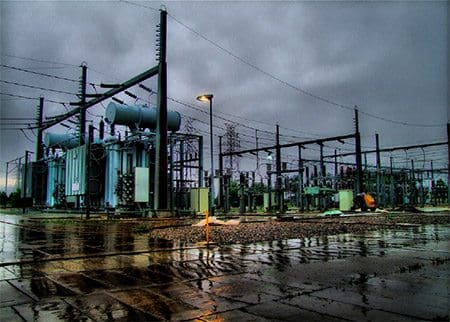
Voltage regulation
Voltage reduction is usually accomplished by controlling the regulators on individual feeders or, as the case may be, on the bus voltage regulator.
Voltage may also be reduced by controlling regulators at subtransmission and transmission substations where they may exist. In this case, the regulators on individual feeders or on the distribution substation buses are locked in place to prevent their negating the effect of the voltage reduction on the incoming supply.
Care must be exercised in lowering the voltage on feeders supplying low voltage networks. Operation of their regulators must be coordinated so that the load shed by one feeder may not be picked up by the other supply feeders.
If not done as simultaneously as possible, the load thus picked up by the feeders whose voltage may not be lowered may cause network protectors to open on the feeder with lowered voltage, and may cause the other feeders to trip from overload, resulting in a cascading effect in which all of the supply feeders may trip, shutting down the network.
In some cases, it may be necessary to block the overcurrent relays to prevent the feeders tripping until all of the regulators have been adjusted and locked at the desired voltage level.
Should the network shut down, its re-energization may be accomplished by blocking the overcurrent relays and closing the circuit breakers of the supply feeders as simultaneously as possible. Batteries operating the closing mechanisms should be checked to ascertain sufficient output is available for satisfactory operation of the circuit breakers simultaneously.
Picking up a piece of the network at a time
If the network is shut down for any length of time and diversity is lost, it may be necessary to cut the network physically into smaller pieces, blocking open the network protectors on the transformers of pieces of the network so they do not pick up load, picking up a piece of the network at a time.
The operation may be repeated until all of the pieces are reenergized; the pieces can then be reconnected.
Simulation of preventing the system collapse
Examine the system shown in Figure 1. Imagine the following scenario that shows several chances for a load shed system to prevent a system collapse and shows some aspects of how an apparently stable system may actually be slowly progressing toward a system collapse.

At first it appears that buses D, E, F, and G are too well tied to the system grid (represented by A, B and C) for an islanding condition to occur. Suppose that buses D, E, F, and G are drawing power from the rest of the world and that loading overall is quite heavy at this time.
Now suppose lines A-D and B-D are on a common transmission tower right of way and for some reason a single event (e.g., a tower failure) took both lines out of service.
To some extent this is almost a triple contingency situation: It assumes the loss of two lines at a time of heavy system loading. But it is a possible scenario that is not beyond the realm of possibility. Suppose that line C-E is now overloaded, and that voltage in the system has decayed. This relieves loading to some extent.
Suppose generator E is small in relation to the local loading and that generator E tries to support voltage and its field began to supply VARs beyond its long-term capacity.
System operators might see the event where lines A-D and B-D were lost and, from their remote location, think the system was surviving the event, but with moderately depressed voltage. However, one minute after the event, tap changers throughout the system start to correct for low voltage and the system load starts to rise. Two minutes after the event the field excitation limiter at generator D forces the field to back down and voltage at the loads falls again.
Then one minute later tap changers start to raise load voltage again and load again rises. Operators might see the heavy loading on line C-E and become concerned but decide to accept the condition. If they could monitor the generation and realize that the excitation limiters had kicked in, they might even be more concerned.
Prior to voltage collapse, another unforeseen event occurs. The protective relaying on the heavily overloaded line C-E trips due to load encroachment that looks like a zone 3 distance fault. The system consisting of buses D, E, F, and G has islanded with insufficient generation to support its load, several minutes after the initial event.
At this point frequency based load shedding may be the only method that can stop the imminent collapse of the island.
This process shows all the means of load shedding that could have been used in the process:
- The last resort, underfrequency relaying, was the final defense against island collapse once the island was created. The condition could have been caught earlier.
- Undervoltage relaying could feasibly have detected a condition and shed load.
- Before the event ever occurred studies by a System Planning group could have been performed that could have shown that if the double line outage condition occurs during heavy loading there would be risk of the system collapse. System operators aware of the condition could have shed load manually.
- Similarly, a properly programmed SCADA system feasibly could have recognized the condition and flagged an operator that load needed to be shed or even performed the load shedding automatically.
References:
- Power Transmission and Distribution – Anthony J. Pansini, E.E., P.E
- Load shedding for utility and industrial power system reliability – Basler Electric Company
Copyright Notice
This technical article is protected by U.S. and international copyright laws. Reproduction and distribution of PDF version of this technical article to websites such as Linkedin, Scribd, Facebook and others without written permission of the sponsor is illegal and strictly prohibited.© EEP-Electrical Engineering Portal.
Related electrical guides & articles
Premium Membership
Edvard Csanyi
Hi, I'm an electrical engineer, programmer and founder of EEP - Electrical Engineering Portal. I worked twelve years at Schneider Electric in the position of technical support for low- and medium-voltage projects and the design of busbar trunking systems.I'm highly specialized in the design of LV/MV switchgear and low-voltage, high-power busbar trunking (<6300A) in substations, commercial buildings and industry facilities. I'm also a professional in AutoCAD programming.
Profile: Edvard Csanyi

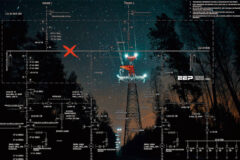
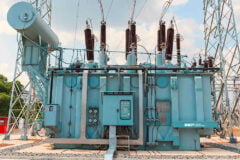
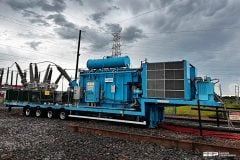
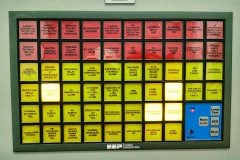






Very good article about electrical.
Can i request article about load rejection test?
Thank you
A very special thanks for the owner of this site and its dynamic team.
All the information is very useful.
Thanks.
this has been very helpful bro